Ed Catto: The Fantastic (Four) Adventures of Tom Tataranowicz
For the past week the pop culture world has engaged in a post game analysis of the under-performing Fantastic Four movie. Instead of offering further analysis, I think it’s time to provide insights into an instance where the Marvel’s first family had more creative and authentic success onscreen.
My friend Tom Tataranowicz is a talented animation professional and a longtime comics fan. I’ve gotten to know him as we’re working together, with a talented team, to create the new Captain Action animated series… But that’s another story for another day. Tom’s impressive resume includes his work on the 1990s Fantastic Four animated show and, understanding his passionate dedication to his craft, I wanted to get his perspective on that “fantastic” experience.
When he is presented with a project like the Fantastic Four, Tom explained his approach to me. “I’m not trying to reinvent it. That’s not my job. Fealty to the original source material is key. Otherwise, fans say, ‘Where’s the comic I like?’ And I have to agree with them. I need to bring the fans’ dreams to life.”
Tom recalled just how he got involved with this Fantastic Four animated series. He had been working on the Biker Mice From Mars animated series and was completing the last of 65 episodes. The organization was called New World Animation at the time, and then the Marvel Films animation division started.
Avi Arad had just made the first season of the Fantastic Four cartoon with another unit, but they weren’t as well received as they had hoped for. One thought was that there were just too many characters crammed in there, in an overly zealous effort to support toy sales.
As Biker Mice From Mars was ending and they liked what he had done with that series, they reached out to Tom to take over both the Fantastic Four and Iron Man shows.
“I proposed that ‘I’m going to revamp everything,’“ recalled Tom.
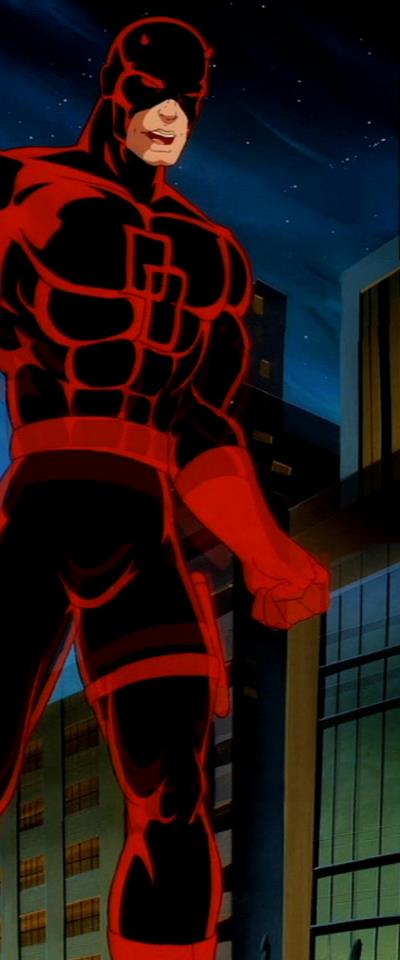 On the FF show, Tom was rather perplexed that the previous team had chosen not to follow the comic’s official canon, focusing instead on often not too good, original stories. So his idea was to adapt classic stories from the comic book. The overall arc of the season that Tom developed revolved around the Inhumans’ introduction and subsequent exile.
On the FF show, Tom was rather perplexed that the previous team had chosen not to follow the comic’s official canon, focusing instead on often not too good, original stories. So his idea was to adapt classic stories from the comic book. The overall arc of the season that Tom developed revolved around the Inhumans’ introduction and subsequent exile.
And he also felt that it was important to change the look of the look of the main characters as well. The first season was using a robin’s egg blue color for the FF costumes that mirrored the existing toy line. But Tom’s vision was to establish a more heroic look by adapting the darker, blue/black, John Byrne style costumes of the 1980s.
“So I mapped out the season’s storylines and arcs and pitched it to Avi Arad and Rick Ungar. They liked it. I pitched it to Stan Lee. He liked it. I pitched it to Toy Biz and they liked it,” said Tom.
A Blind Man Shall Lead Them
But the question for season 2 was… Where to start? Looking over those old comic book stories, it became apparent that it was difficult, if not almost impossible, to get adequate material from just one issue to be enough for one very good episode. It often required story lines from multiple issues. “One particular story I always liked was the two parter from issues #39 and #40, A Blind Man Shall Lead Them, with Daredevil. It was also a real fan favorite. Plus, I thought having Daredevil in there would be very cool. And then, of course, it had the exciting bonus of being a Dr. Doom story. A perfect second season opener. As Stan Lee was fond of saying – Excelsior!”
“With the second episode, we launched into the Inhumans saga. That was the season’s arc and it was kicked off by a three parter,” Tom explained. “My B storyline for that arc was Johnny meeting and subsequently searching for Crystal.”
In the first season, the previous team had already told the “ultimate” Silver Surfer/Dr. Doom story, Doomsday. Tom didn’t like the way it turned out. “For the second season finale, I – admittedly, somewhat arrogantly – decided to redo that story and do it right; to do it as it truly deserved,” said Tom. He used the “Garden of Eden” beginning from Silver Surfer #4 as a way to introduce the Surfer and dovetailed it into the threat of Dr. Doom stealing the Surfer’s powers.
“I wanted to treat the Fantastic Four as if the stakes were always really huge. The Kree, The Skrulls, the Inhumans – they were all part of this epic comic book saga”, said Tom. “I even went to some of the John Byrne stories – to mix things up as well as to help amplify on stories while still staying faithful to the comics,” recalls Tom. “For example, there was this one episode where the FF were going after Ego, and encountered Thor and Galactus. It was one of the best animated shows ever done at that the time. After it aired I got calls from friends, colleagues and other studios – people I didn’t even know – saying that was one helluva good-looking show,” mused Tom. “That high degree of artistic success was why the series’ cancellation proved to be so bittersweet.”
In the first season, each episode had a minute-long introduction from Stan Lee in his office. “Stan is a lively, very personable guy, but I didn’t particularly see the necessity of doing those things in the beginning. I would much have rather used the time for the stories. Well, that didn’t sit particularly well with Stan, and I have to admit I completely understood his position.” said Tom. As a compromise, Tom added 15-second introductions that validated Stan’s contributions and creativity and had him matted in against cool painted backgrounds from the show.
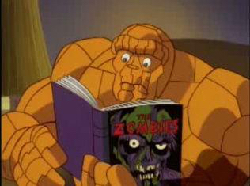 Back then, most series, especially animated ones, were not told in sequential continued story arcs. Stand alone episodes were simply the way it was. Because there was the season long Inhumans continuity, around the eleventh episode of the season, Tom developed a recap episode. He used the Impossible Man (with a stellar voice performance by Jess Harnell of Animaniacs) in which he and Johnny interacted to cleverly segue into clips of the season’s events that had earlier transpired. As the Impossible Man was a more cartoony character, the animating studio, PASI, really went for it and did a great job on this episode, even though there was only 5 or 6 minutes of new animation. “From there we went on to the freeing of the Inhumans and everyone was then up to speed and ready for it.”
Back then, most series, especially animated ones, were not told in sequential continued story arcs. Stand alone episodes were simply the way it was. Because there was the season long Inhumans continuity, around the eleventh episode of the season, Tom developed a recap episode. He used the Impossible Man (with a stellar voice performance by Jess Harnell of Animaniacs) in which he and Johnny interacted to cleverly segue into clips of the season’s events that had earlier transpired. As the Impossible Man was a more cartoony character, the animating studio, PASI, really went for it and did a great job on this episode, even though there was only 5 or 6 minutes of new animation. “From there we went on to the freeing of the Inhumans and everyone was then up to speed and ready for it.”
Crystal Clear
For the second season, as Voice Director, Tom kept most of the original voice cast. Brian Austin Green had bowed out as Johnny Storm and was re-cast. But one character Tom really wanted to change was Doctor Doom. “The first actor was certainly good but I felt the character came across as a bit too much of a mustache twirler,” said Tom.
Victor Von Doom was from Latveria, which seemed to be one those Eastern European/Germanic countries. And the aristocrats from those countries were well educated, as if they went to Oxford and thus often spoke with an English accent, Tom reasoned. So he recast Doom with Simon Templeman, whose voice had that nobility and who laced his performance with a unique aspect of condescension and decadence. “He did a memorably great job,” remembered Tom.
With the Inhumans being new characters to the series and so integral to the season’s arc, Tom had a clean slate to cast whomever he thought best for any particular role. Mark Hamill, who impressed everyone with his animated Joker, was a natural for Maximus the Mad. Likewise Star Trek – The Next Generation’s Michael Dorn was the perfect voice for Gorgon. “Black Bolt was easy he was basically mute, so he didn’t need a voice,” joked Tom.
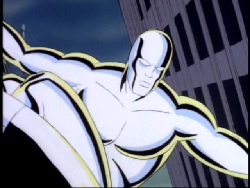 The young Inhuman love interest for the Human Torch, Crystal, was very important to the storyline and she needed to be fresh. She was young, but she wasn’t a kid; she needed to have a womanly quality. “Then I saw supermodel actress Kathy Ireland, on television. I liked the quality of her voice and thought she’d be good.” Even though she wasn’t primarily a vocal actress, Tom was impressed at how hard she worked and how seriously she took it. The results were terrific – the perfect, definitive Crystal. And it all also helped with publicity – as her casting became a story on Entertainment Tonight.
The young Inhuman love interest for the Human Torch, Crystal, was very important to the storyline and she needed to be fresh. She was young, but she wasn’t a kid; she needed to have a womanly quality. “Then I saw supermodel actress Kathy Ireland, on television. I liked the quality of her voice and thought she’d be good.” Even though she wasn’t primarily a vocal actress, Tom was impressed at how hard she worked and how seriously she took it. The results were terrific – the perfect, definitive Crystal. And it all also helped with publicity – as her casting became a story on Entertainment Tonight.
“I always liked casting against type,” explained Tom. “The Silver Surfer was tough. What does he sound like? Stentorian? No. Too easy and cliché an approach.” So, it took a couple of attempts with various actors, but finally Tom cast Eddie (Green Acres) Arnold’s son, Edward Albert, as he felt the philosophical sound to the actor’s voice ideally suited the Surfer’s musings.
Keeping it Fantastic
Tom and his talented crew worked hard to keep the show true to what it was. “To me, the Fantastic Four was the self-proclaimed crown jewel of the Marvel Universe,” remembers Tom. “Even though I may have personally liked Spider-Man more as a kid, the FF was always the big kahuna, with the biggest stakes.”
So for the new main title sequence, Tom wanted to showcase the FF’s rich history. And he would tell it through a great iteration of iconic Kirby covers: FF #1, the tiny FF in the gigantic Dr. Doom’s hand from FF Annual #2, “Beware The Hidden Land” from issue #47, the four panel split screen from a later issue, in which the FF were each individually fighting an android.
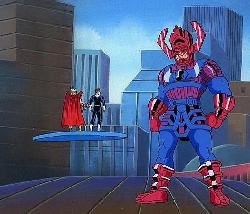 He also used this main title to showcase the history of the FF’s costumes. From issue #1 with no costumes, through the 60’s Kirby look, a nod to the Season #1 robin egg’s blue costumes and finally to the then ‘current costumes’ inspired by John Byrne.
He also used this main title to showcase the history of the FF’s costumes. From issue #1 with no costumes, through the 60’s Kirby look, a nod to the Season #1 robin egg’s blue costumes and finally to the then ‘current costumes’ inspired by John Byrne.
Tom did what he always did when creating a main title. He’d listen to the new music provided by the composer, Will Anderson. He’d drive and drive in his car, just trying to viscerally imagine where and how he’d place which visual images that were conjured up by beats with the music.
For the new look of the show, everyone’s first knee jerk reaction was to “do Kirby.” But Tom took issue with that. A big Kirby fan, Tom’s point of view was that if you mimic Jack Kirby’s work, it would run the almost inevitable risk of looking bad. Kirby’s art worked so well because of the strength of his uniquely individual talent. Only Kirby could truly be Kirby and thus there was also a realistic danger that the overseas studio artist working on the show just wouldn’t understand Kirby’s Style.
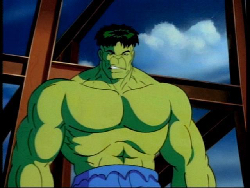 So Tom took another approach. He hired legendary artist John Buscema to redo the characters. He based the show upon John’s also iconic Marvel look and own tenure on FF after Kirby left. In addition, he was able to send the overseas Philippines studio, PASI, that did the actual animation, John Buscema’s book, How the Draw Comics the Marvel Way, as well as the accompanying video of the book to explain it visually. “Buscema was an illustrator. He drew realistically and the anatomy made sense. Especially to the Filipino artists who loved American comic art. Everybody was extremely happy with that approach,” recalls Tom.
So Tom took another approach. He hired legendary artist John Buscema to redo the characters. He based the show upon John’s also iconic Marvel look and own tenure on FF after Kirby left. In addition, he was able to send the overseas Philippines studio, PASI, that did the actual animation, John Buscema’s book, How the Draw Comics the Marvel Way, as well as the accompanying video of the book to explain it visually. “Buscema was an illustrator. He drew realistically and the anatomy made sense. Especially to the Filipino artists who loved American comic art. Everybody was extremely happy with that approach,” recalls Tom.
Clobberin’ Time!
Overall, Tom was very pleased with the show. Great stories. Terrific animation. Top notch voice acting. Unfortunately, the show didn’t earn the ratings needed to continue, and many believe that was because fans just thought it would be more of the same from the first season and never gave it a chance.
There were plans for a third season. Tom had developed the arc that focused on Sue’s pregnancy, Agatha Harkness and the birth of Franklin. But Tom wanted to start the season with the Invisible Woman running away with Namor, the Sub-Mariner. “There could be Sub-Mariner action figures, so the toy people liked that”, he explained.
During production, it was mandated that the Hulk guest star in an episode (and also in an episode of the companion series Iron Man), so the progression to the subsequent Hulk series made sense.
The Incredible Hulk series on UPN came next. “I had an overall plan of what I wanted to do with each new series – I wanted to do them (all the Marvel Series) so they all looked very different from one another. My idea was that each series would be unique. Here’s our Gene Colan show, here’s our John Byrne show, or our Ditko or McFarlane show. Like how it would be if you picked out one of the comics from the rack. Not cookie cutter” said Tom.
“As always, it was hard work, but it was gratifying,” said Tom. “I am very proud of what we accomplished. It was one of the few times in television that a studio had truly done right by a comic book.”

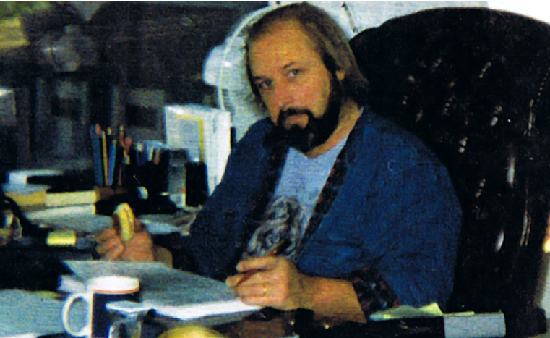

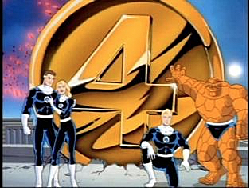
![Fantastic Four - Cast Photo - 2nd Season - 1996[1]](http://www.comicmix.com//wp-content/uploads/2015/08/Fantastic-Four-Cast-Photo-2nd-Season-19961.jpg)









